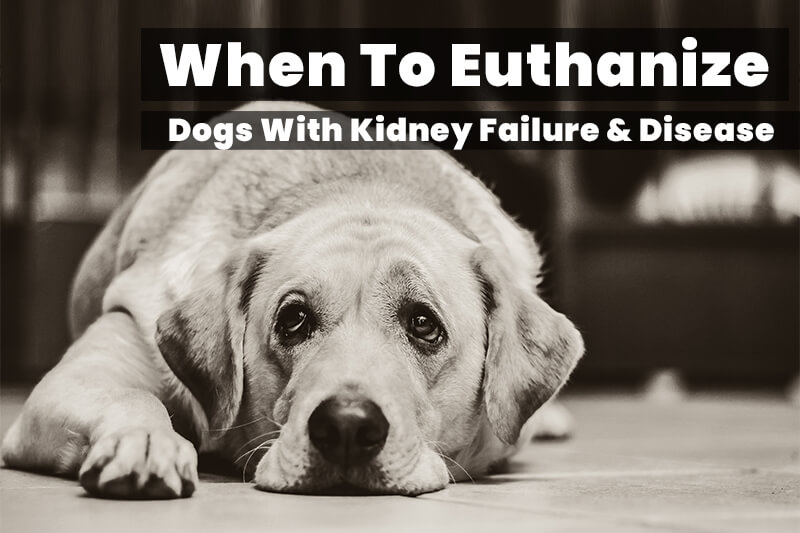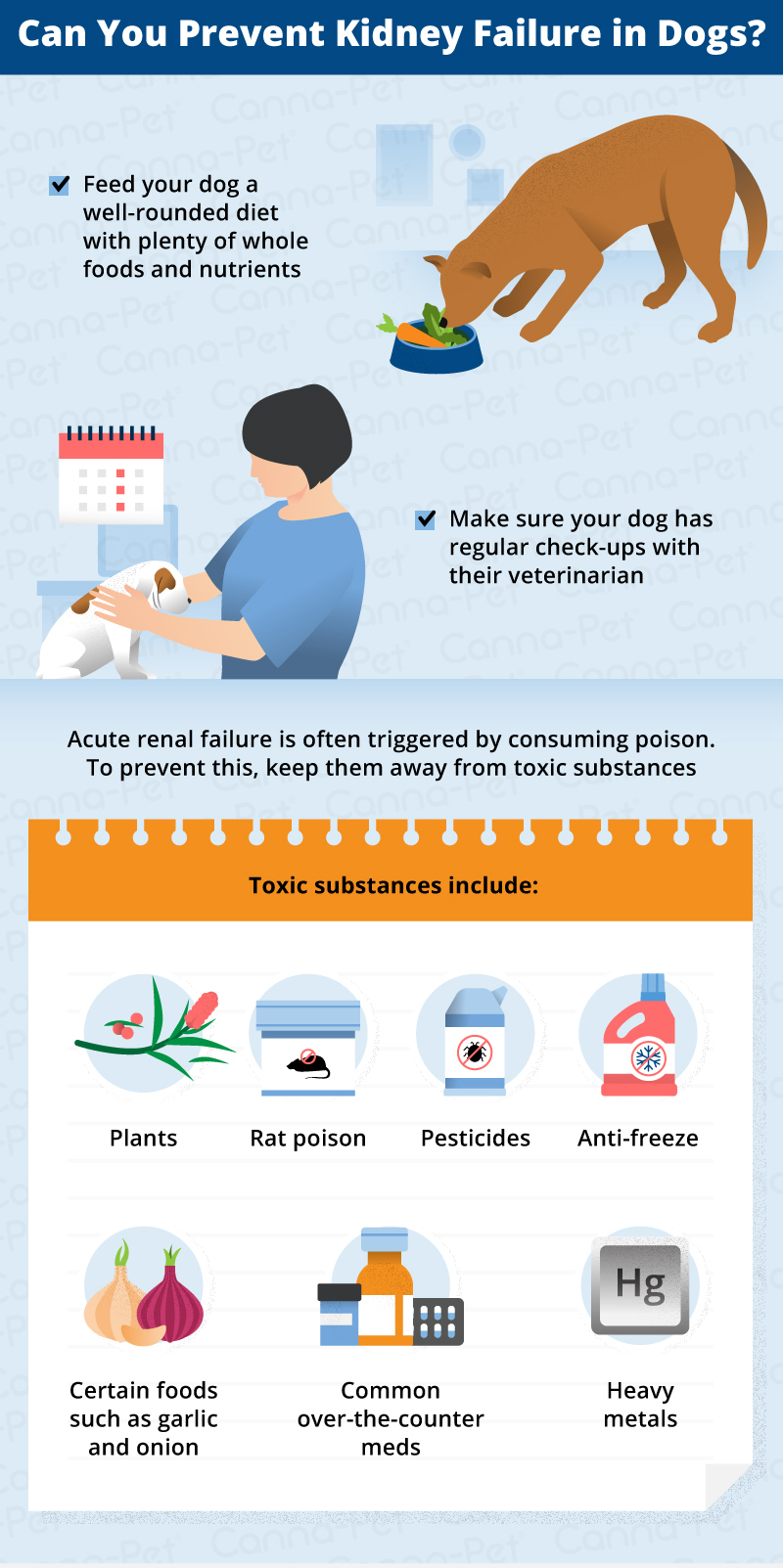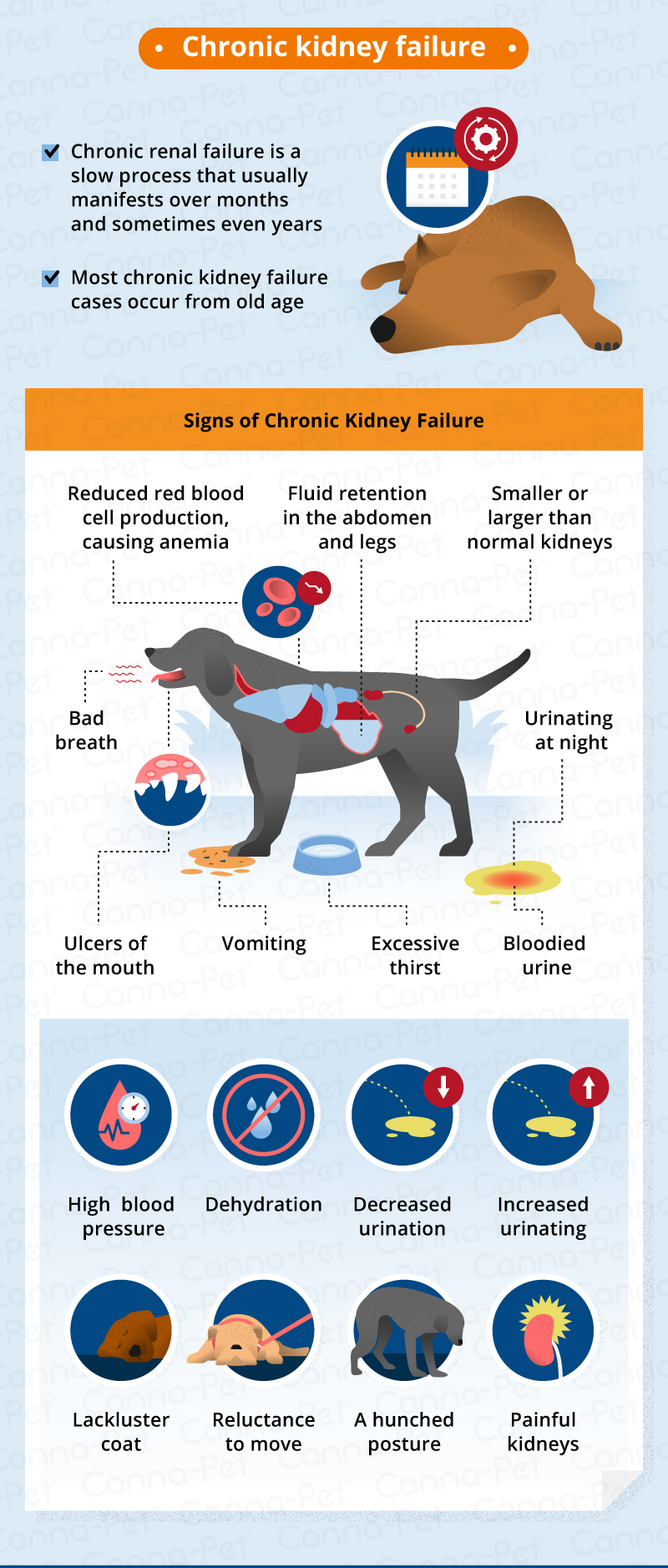If you wonder when to euthanize a dog with renal failure, your vet will offer advice. My dog has congestive heart failure when to put down if your dog is suffering chronic symptoms of heart failure and their quality of life is low, then it may be time to euthanize your dog.

When to Euthanize a Dog with Kidney Failure or Disease
2) your dog is near the stage of kidney failure.

Dog kidney failure when to euthanize. 1) your veterinarian has tried all medical options. There are treatments and surgery for digestive diseases. As a result, it is important to know the treatment options that are available, the average survival rates, and when your dog is.
It is really important to be aware of the fact that even though the prognosis can vary depending on the circumstances present, canine kidney disease is still a terminal illness as it will lead to kidney failure as time goes on. They spend most of the day sleeping So it best to put it down before it gets even worse.
This includes medications, kidney dialysis, and other treatments. Many cases of kidney failure in dogs aren’t detected until months or years after it began. Depending on the size of the dog, typical ages of onset vary.
When to euthanize a dog with kidney failure? I know this is devastating even to read. Here are some of the symptoms of kidney disease in dogs.
If your dog is no longer able to have a quality of life and enjoy the things he loves, it could be time to euthanize if nearing the prognosis of kidney failure. Should i euthanize my dog with kidney failure? As this is a slow process, it may not be detected right away.
It’s also a much more common form of kidney failure. The cost to treat dog kidney failure varies depending on where you are and the stage of the disease. Just because your pet is undergoing organ failure doesn’t mean they need to be put to rest.
A dog’s kidney is located just below its ribs. At that time, your dog will probably not be lively again. Though each dog can vary, the most common symptoms include:
Increase in thirst & excessive drinking; They will base the decision on the progression of the condition, the severity of kidney function loss, and the amount of pain your animal is going through. Dogs are the cutest and the kindest beings in the world.
It is also caused by underlying ailments or diseases and hereditary conditions. When to put down a dog with kidney disease? Best time to euthanize your dog with kidney failure.
Symptoms of acute kidney failure in dogs (ira): You love your pet and don’t want to lose them, but don’t want them to suffer either. 3) your dog no longer enjoys a good quality of life.
This typically occurs in older dogs as the tissue in the kidneys wears out. This means that at some point, the kind thing to do would be to euthanize your dog. Signs your dog is ready for euthanasia.
It can also be as a result of ingesting toxic products in excess. Similarly, your canine trusted you to take care of them and their expenses for the duration of their life, and you are dependent toward the finish of their existence with settling on a choice dependent on what is at last best for their prosperity. Although it’s rare, dogs sometimes suffer from chronic and acute kidney.
As long as your dog is eating and acting like she feels ok, don't make any rash decisions. The right time to put a dog down with kidney disease is when you have exhausted all medical options. Whether you should euthanize your dog with kidney failure depends on how effective the treatment is.
For smaller dogs, the early signs of kidney problems tend. She will tell you when she is ready. For dogs, kidney failure is often attributed to decreased blood flow, urinary obstruction, or infections.
When to euthanize a dog with kidney failure? The ideal of friendship, full of love. The question of dog kidney failure when to euthanize is really a big deal, and you mustn’t avoid this duty.
The simplest answer is, after exhausting all the possible medical options and having zero progress. Whatever decision you make, your vet can help you understand any medical options available to you and may even be able to help you decide when to humanely bid farewell to your. This is because water can keep the dogs hydrated.
If surgery is involved, it might increase the costs a lot more. The dog kidney failure when euthanize d may be related to drinking more water. It’s dependent on how old your dog is and the reason for the kidney failure initially.
Overdose of certain meditations and tainted foods can lead to kidney failure. The dogs that are victims of kidney failure cannot drink plenty of water and produce concentrated urine. In most cases, it would cost you anything between usd 3,000 and 4,500.
Increase of accidents around the house; However, as your dog ages, your vet may check for signs of kidney disease or other wear and tear on these vital organs. Choosing the right time to put a dog down can be overwhelming, but your veterinarian can guide you through the process.
One prominent sign is that when your dog is suffering is from constant pain and you are not able to soothe him. If you think that your dog may have a renal failure in acute in dogs (ira),. A dog in renal failure can last a year or more with proper nutrition and adequate fluids, so don't give up.
Chronic kidney failure is the slow decline in the ability of the kidneys to eliminate waste from a dog’s body. At what age does kidney failure become more likely? Canine kidney failure is a disease that appears suddenly, the most common symptoms to recognize it is:
Nearing the prognosis may be the right time to euthanize. Now comes the toughest question, euthanization of a dog with kidney failure. The length of time that it takes for kidney failure to take hold can vary.
To think of performing the act will leave tears in your eyes. The right time to euthanize a dog with kidney disease is when: You will know instantly that she is.
Symptoms of kidney disease in dogs. If kidney failure is due to old age or excessive use of medications, it could take anything from a few weeks to a few months for it to take hold. Simply put, the perfect time to euthanize your dog with diseases like kidney failure is when you have run out of all available medical options.
The condition is incurable, but it can be managed with treatment.
For most small dogs, the early signs and symptoms of kidney disease occur anywhere between ten to fourteen years of age. According to the international renal interest society (iris), stages of chronic renal disease are numbered 1 through 4 (with four being the most severe).

Kidney Failure in Dogs Signs & Causes CannaPet®
This results in the production of more urine.

Dog kidney failure stages. In the fourth and final stage, advanced kidney disease begins causing severe symptoms. The ideal diet for a dog in the advanced stages of kidney failure is lower in protein, low in phosphorus, and is not acidified. In advanced kidney disease, a decreased protein diet will also decrease the workload on the kidneys.
Dogs and cats with mid to late stage 2 ckd often have progressive loss of renal function, although the rate of renal disease progression can be variable. With 1 being the mildest and 4 the most severe. What symptoms indicate canine kidney disease?
The international renal interest society classifies the stages of chronic kidney disease from number 1 through 4. In the third stage of kidney disease, your dog begins showing symptoms of kidney failure. Chronic kidney disease in dogs is an irreversible and progressive condition.
The average survival time for dogs in stage 1 is over 400 days. Early stage kidney failure is often characterized by increased drinking and urination. If your dog is diagnosed with stage 1 or 2 kidney disease, life expectancy is years.
This occurs when the kidneys lose function gradually and is typically caused by degeneration related to old age. Unfortunately, clinical signs are usually present only during the later stages of the disease, which makes it very difficult to effectively treat kidney damage once it is diagnosed. As the kidneys fail, they begin functioning at minimum levels.
Treatment will depend on how advanced your dog’s kidney disease is,. However, you can look for the following common symptoms if you suspect your dog has kidney disease: Unfortunately, on the other hand, if your dog is diagnosed with stage 3 to 4 kidney disease leading to kidney failure, you could be looking at weeks and months.
Renal failure in dogs is a progressive disease; Kidney failure (also called renal failure) in dogs can be chronic or acute: The symptoms of kidney disease vary from dog to dog.
Dogs generally don’t show clinical signs. Stages of renal failure in dogs the elevation of blood waste product and abnormalities in urine, including the presence of protein, can indicate the severity of chronic kidney disease. The first two stages are characterized by a slow buildup of toxins in the blood.
Many vets consider stage 3 and stage 4 kidney disease to be the same thing. In the third stage, the dog can live one to two hundred days. Stage ckd one or more of these diagnostic findings to diagnose early ckd persistent increased sdma >14 µg/dl both of these diagnostic findings 1 2 3 4 persistent renal proteinuria upc >0.5 in dogs;
This type of diet helps reduce the amount of protein wastes or metabolic toxins that may make your pet feel sick and lethargic. For example, at stage three, the kidneys are generally functioning only between 15 and 25 percent, whereas, at stage four they are only functioning at less than 15 percent. So, most pet parents often don’t catch kidney failure until their beloved pooch has reached stage 3 or stage 4.
Your dog may develop various symptoms but you might not really see any in the earlier stages (stages 1 & 2), but in the later stages, there may be some symptoms that start to show up. To keep the dog from becoming dehydrated due to increased fluid loss in the urine, thirst and water consumption is increased. Increase of accidents (urinating and defecating) vomiting;
This information was published by a veterinary journal. The dog can survive for about fourteen to eight days. Creatinine is normal or mildly increased and sdma is mildly increased.
If a dog has early stage kidney disease, a vet may flush out her kidneys to remove the toxins. Chronic kidney failure is the most common type of kidney disease in dogs, occurring in 0.5% to 1% of dogs. A vet may perform a complete urinalysis and a blood biochemistry analysis to officially diagnose the dog as having kidney failure.
Thus, one of the earliest clinical signs of kidney failure is increased water consumption and urination, and is called compensated renal failure. When the dog goes in the second/third stage, you might notice that lucky is getting lethargic and depressed. Kidney damage generally cannot be reversed in this stage;
It goes from stage i, where pets show evidence of disease but no change in kidney function, to stage iv, where the condition is making the dog unwell. According to the dog health guide, chronic kidney disease leading to renal failure occurs in four stages. Reduce phosphorus intake with renal diets and enteric phosphate binders (if needed to meet goals).—this is a major treatment goal for dogs and cats with stage 2 and beyond ckd.
Suggestion roughly title.navigating kidney failure in cats’ final stages | cat renal failure, kidney failure, cat kidney kidney failure in dogs: There is a very short time for dogs in 4th stage kidney failure; How is renal disease in dogs treated?
Upc >0.4 in cats urine protein to creatinine (upc) ratio sept ’15 oct ’15 nov ’15 0.6 0.7 1.0 Treating kidney disease in dogs The dogs can live about four hundred days in the first stage.
Once a dog is diagnosed with kidney disease, vets may asses their blood to stage the condition to help determine treatment. In stage 3, it ranges from 110 to 200 days. Clinical signs may be absent or mild.
Often, the kidneys can't even be stimulated to function. We recommend that iris ckd stage 1 patients with persistent proteinuria (upc ≥ 0.5 for dogs or 0.4 for cats) are not only monitored and thoroughly investigated but also receive standard treatment for proteinuria as currently recommended for iris ckd stages 2 to 4. Dogs typically have normal blood creatinine or normal/slightly elevated sdma.
A dog may be asymptomatic during stage 1 or stage 2 of kidney failure. In the second stage, the dogs survive about two to four hundred days. Dogs in stage 2 disease have mild kidney failure and still don’t typically show clinical signs.
Vomiting and diarrhea also appear, as well as dehydration because your dog loses too much fluid through urination.